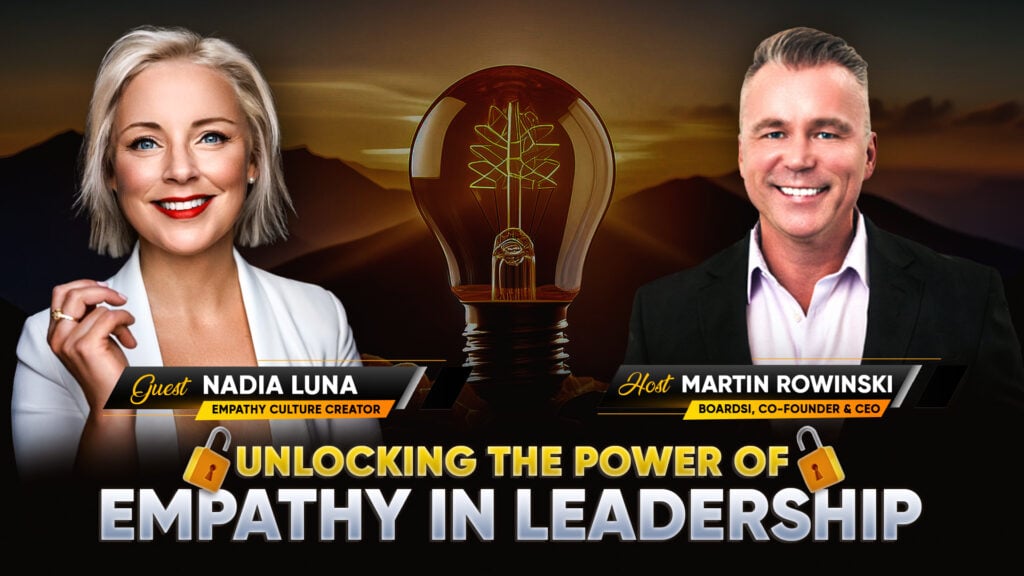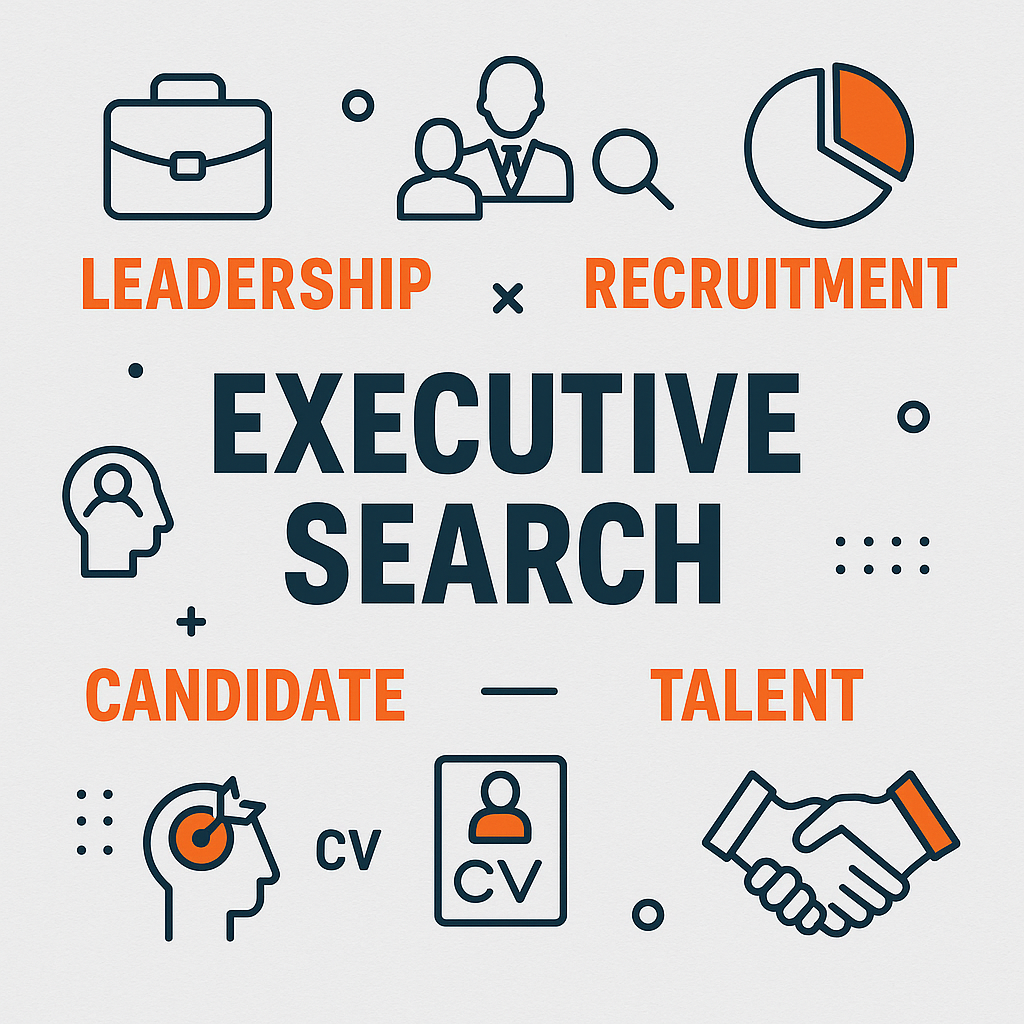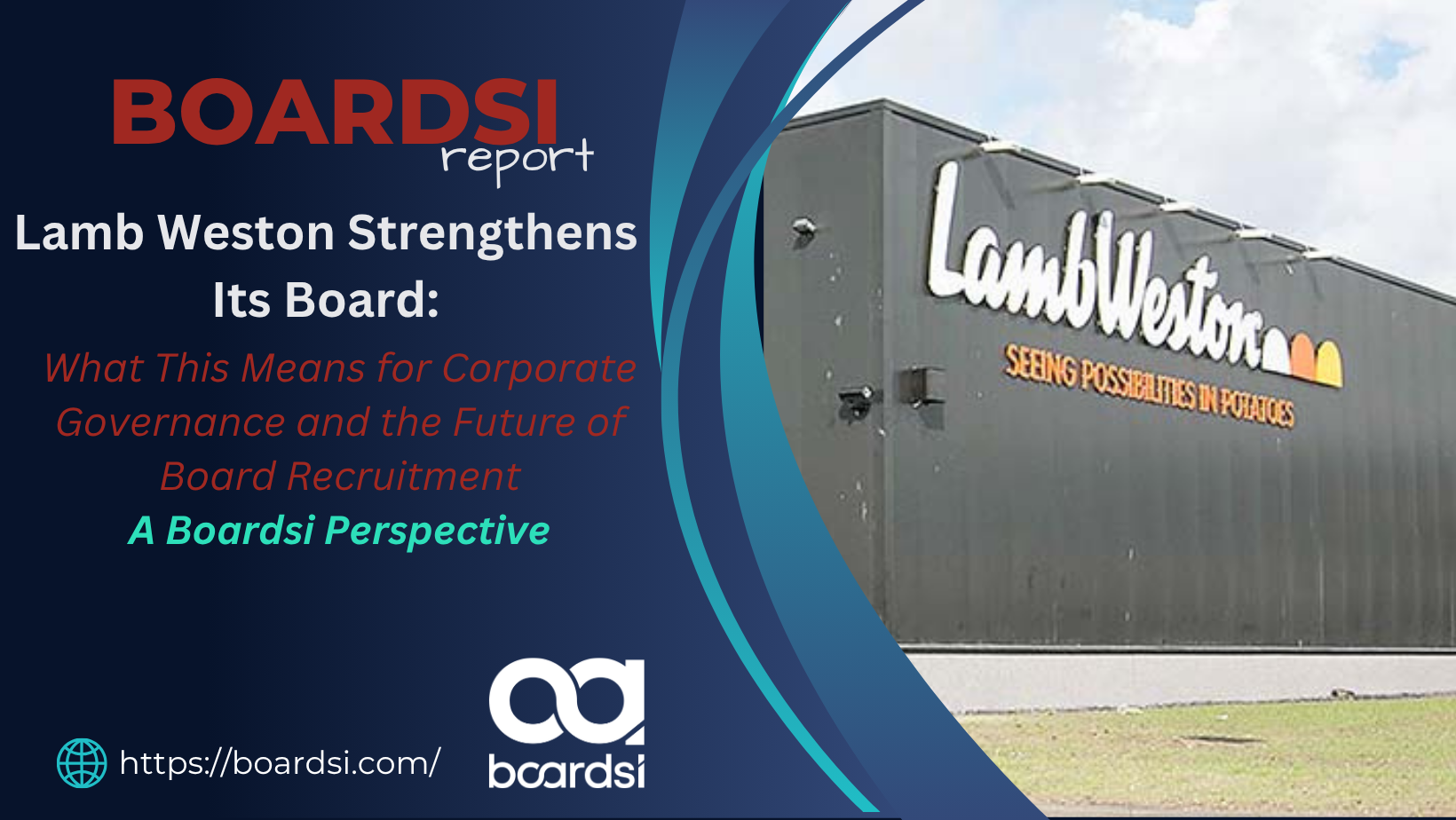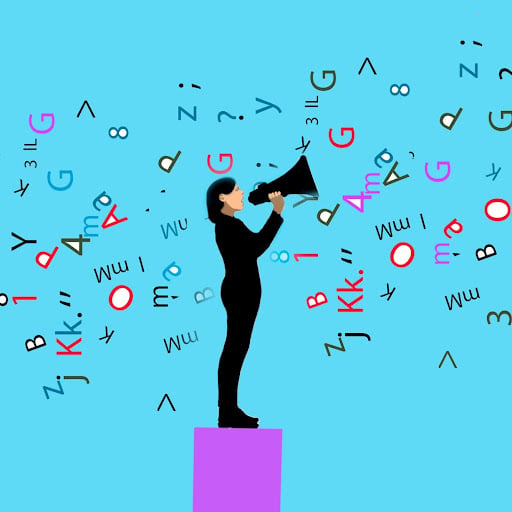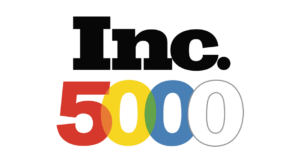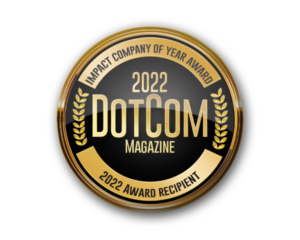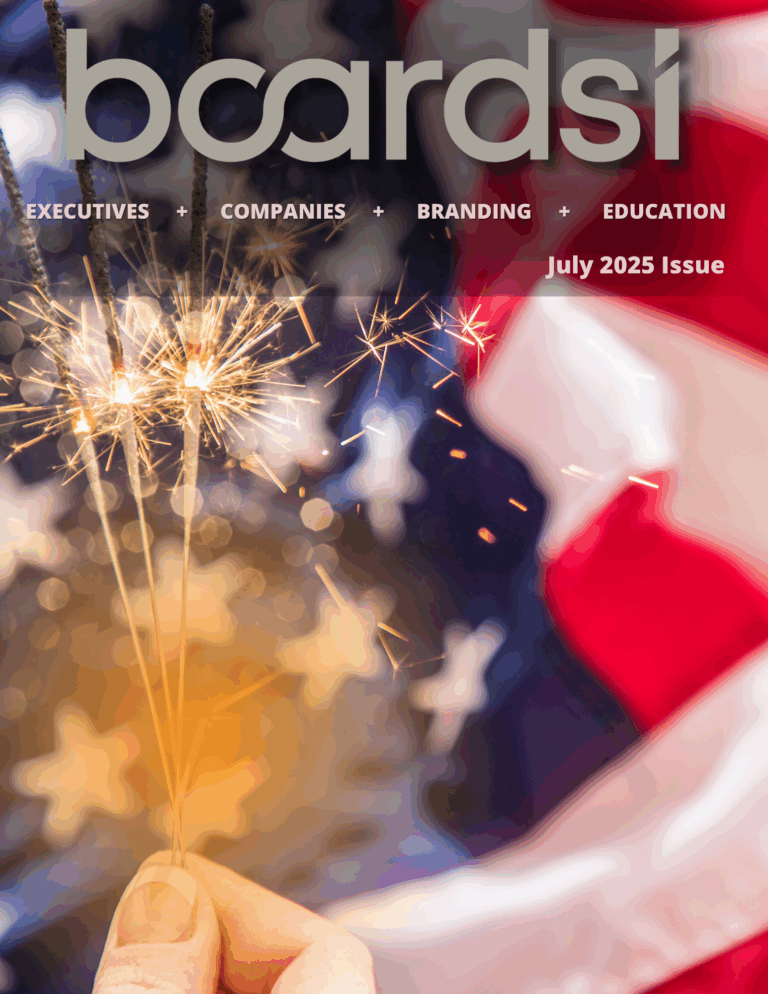The Transformative Power of Empathy in Leadership: Insights from Nadia Luna on Boardsi Leadership Talks
Welcome to the Boardsi Leadership Talks blog! Today, we have an enriching episode hosted by Martin Rowinski, co-founder and CEO of Boardsi. Martin sits down for a deep and insightful conversation with Nadia Luna, an empathy culture creator, to explore the transformative power of empathy in effective leadership.
Introduction
In this episode, Martin dives into a topic that resonates at the core of effective leadership and personal growth—empathy. Nadia Luna, our guest, embodies the spirit and practice of empathy in every facet of her professional journey. Growing up in a small-town restaurant run by her wonderfully hospitable mother, Nadia learned that empathy is not just a soft skill; it’s the heart of all human connection.
The Journey of Nadia Luna
From working in some of the world’s finest hotels to studying psychology and working in mental health, Nadia’s experiences have deepened her understanding of how essential empathy is in achieving meaningful and successful life outcomes. Her innovative LUSSO method has transformed how leaders and organizations approach their relationships with teams and clientele alike.
The LUSSO Method
Nadia’s LUSSO method stands for Look Inside, Understand Others, Stay Positive, Say it After Listening, and Outdo It. This method simplifies the concept of empathy into five practical, actionable skills:
- Look Inside: Self-awareness is key. Before you can understand others, you must first understand yourself.
- Understand Others: Learn to collect and interpret emotional information to better interact with people.
- Stay Positive: Maintain a positive attitude and resilience; it opens up better problem-solving and stronger emotional connections.
- Say it After Listening: Engage in active listening, fully understanding and showing empathy before you respond.
- Outdo It: Put the collected information into action with personalized responses that make others feel truly seen and heard.
Empathy in Action
Nadia shares how applying these principles can foster genuine relationships and create a more empathetic and effective corporate culture. With personal anecdotes and real-world case studies, Nadia illustrates how empathy has dramatically transformed team dynamics and leadership styles.
Practical Steps for Leaders
For leaders striving to be more empathetic, Nadia offers practical, actionable steps you can start implementing today. From observing and conversing with your team to practicing active listening, these steps can help cultivate a more positive and empathetic work environment.
Tune in to this enlightening episode of the Boardsi Leadership Talks podcast to discover how fostering an empathetic culture can inspire and elevate both personal and professional lives. Whether you’re a seasoned leader or an emerging one, Nadia’s insights offer valuable guidance on integrating empathy into your leadership practices.
- Empathy is a mindset that involves emotional empathy, understanding others, and compassionate empathy.
- The Luso method breaks down empathy into five underlying skills: look inside, understand others, stay positive, say it after listening, and outdo it.
- Self-awareness and active listening are key to practicing empathy.
- Authentic leadership and leading by example are important in fostering an empathetic workplace culture.
- Observing and getting curious about team members’ lives can help leaders connect with them on a deeper level.
- Creating opportunities for personal connections and practicing active listening are actionable steps leaders can take to enhance empathy in the workplace.
- “Empathy is more than a skill. I call it even a mindset.”
- “Empathy is best when it’s put into action.”
- “Empathy is all about being authentic.”
#Leadership #Empathy #BoardsiLeadershipTalks #MartinRowinski #NadiaLuna #LUSSOmethod #CorporateCulture #LeadershipDevelopment #PersonalGrowth #WorkplaceWellbeing #EmpatheticLeadership #TeamDynamics #ProfessionalSuccess #EmpathyInAction #HumanConnection
Martin Rowinski (00:01.008)
Welcome to Boardsi Leadership Talks podcast. I’m your host, Martin Rowinski co -founder and CEO of Boardsi. And today we’re diving into a truly transformative topic that touches the core of effective leadership and personal growth, empathy. Our guest today embodies the spirit and practice of this critical skill in every aspect of her professional journey. Joining us is Nadia Luna.
and empathy culture creator who has dedicated her career to championing empathy in leadership. Born and raised in a small town restaurant by a wonderfully hospitable mother, Nadia learned from an early age that empathy is more than a soft skill. It’s the heart of all human connection. Her experiences from working in some of the world’s finest hotels to studying psychology and working in mental health.
have deepened her understanding of how essential empathy is to achieving meaningful and successful life outcomes. Nadia’s innovative approach, the LUSSO method, has transformed the way leaders and organizations approach their relationships with teams and clientele alike, emphasizing that to truly see and understand others can profoundly change how we work and live.
Today we’ll explore how fostering genuine relationships and nurturing an empathetic culture can inspire, change and elevate both personal and professional lives. Nadia, thrilled to have you with us today. So thank you for joining me. It was a bit winded. Well, you’re about to get to know her and hear yourself and…
Nadia Luna (01:45.819)
Thank you and thank you for that amazing intro. Wow. I want to know her.
Martin Rowinski (01:57.008)
What I’m excited about is a lot of people are about to get to know you and let’s let’s learn a little bit more about empathy. We all need it. So let’s get into how our how our listeners can enhance their lives through the power of empathy. And before we jump into the details, I would love to hear you explain the definition of empathy.
Nadia Luna (02:05.563)
Absolutely.
Nadia Luna (02:20.429)
Yes, absolutely. So empathy is something that I’ve noticed throughout my career that is not necessarily always present, right? Either if we go to a coffee shop or we go to a five -star hotel like I worked at. And so at one point in my career, I really started to dig into why it’s not as present. And one of the reason is because it is kind of complex and maybe even abstract.
And back many years ago, I started to teach at college level a class called customer oriented approach. And I wanted to make sure that my students not only understood empathy, but could apply it afterwards. So I took the definition that really that already exists, but made it a little bit more visual. And for me, empathy is more than a skill. I call it even a mindset.
Right? So it’s to make every interaction count. You know, it’s a, it’s this unique and meaningful interactions that we want to create to improve the quality of our interactions, our relationships by fostering it in a positive way. So there’s three levels of empathy. So there is the heart, the head and the legs.
So let’s start with the heart. So the heart is the emotional empathy, right? So it’s the ability to sense what someone else is feeling. So let’s say that my husband is in the room and stump his toe against a piece of furniture. You know, like when we saw some, we see someone hurt themselves, we clench, right? We feel it. So that’s the first level, right? So we share that feeling. And because we share that feeling, we can connect on a deeper level.
because our concern now is genuine because I know exactly what it is. It doesn’t mean that it’s exactly the same situation, the same type of pain, but I can imagine from other types of maybe I’ve never stumped my toes, which I decide to think everybody’s done that, but I can imagine what it feels like. So that’s what is the first thing. It’s the emotion at play. Then we move on to the head. So now like, ouch, it hurts.
Nadia Luna (04:36.251)
Now we’re trying to understand what’s going on with a person and what the person would need in this moment. So for example, does he need me to grab a chair? Does he need ice? Does he need me to or give him a minute by himself? Right. But really here, the key is curiosity, right? We really need to dig into asking questions and by craving to understand the other person’s behaviors or emotions.
we naturally put ourselves in their shoes by reflecting on our own past feelings and thoughts, right? And so this is important to, it’s an important part where we ask questions, not assume, you know, sometimes we assume, that’s what they need, or that’s what I would need, but that’s, empathy is not about us, right? In the moment.
But this is like, I would say most people would understand that part of the definition of empathy. The part that they’re missing is the next one, because thoughts are great, but they do very little for the person that just injured themselves, right? And so that’s where we go to the legs. So the compassionate empathy. So the ability to sense what the other person needs from us in that specific moment. So not only now we have a concern for the other person,
and share an emotion, but now we can take practical steps to reduce the pain or to make that interaction just that much better. So the whole body is full of empathy when we exchange with others, when we use our heart to allow to sense what the other person is feeling, our brain to identify what the person is going through, what they need. And then finally, empathy is best when it’s,
put into action, so our legs, right? So we offer something that’s personalized and that it’s based on the information we just collected. And this is what we call the Platinum Rule, right? To treat others as they wanna be treated, not as I wanna be treated, which is the Golden Rule. So this is my definition of empathy. So heart, head, and legs.
Martin Rowinski (06:51.312)
Awesome. Well, now with that, take us real quick through your journey. I’m guessing your mom understood empathy. But yeah, take us through your journey from being raised in a small town to obviously, you know, teaching in college. Yeah, let it take us through.
Nadia Luna (07:09.755)
Yes.
Absolutely. So you mentioned many of these things, but I’ll just, you did such a great intro. But I do like to believe that empathy is what determined my journey, my entire life. So yes, so I grew up with my mother. She was empathy, right? So she had this ability to make you feel seen, to feel heard, and like you mattered because every single interaction for her mattered. It was not like there’s one that’s
Martin Rowinski (07:19.376)
Thank you.
Nadia Luna (07:42.971)
more important than the other, everybody mattered. And I can still remember sitting on the counter of the diner and feeling that, you know, wow, this is so amazing that my mother’s touching so many lives and it’s just like small town diner, but I was small also and I didn’t know much better. But she made every single interaction meaningful. And so she made everyone feel amazing in the process.
while she was serving you your favorite dish. And that’s always stuck with me. And I worked in psychology afterwards and work in psychiatry. And for me, that was still normal. I was surrounded with all these people that also had the same mindset as me. What was kind of a challenge is when eventually, yes, my career took a turn for the hospitality world, which I guess it’s kind of natural considering I come from a restaurant.
And I was so excited about my first job in sales in this beautiful resort in Mexico, in Cancun. It was a five star property, five diamonds even. And so I’m like, wow, I was excited about walking through the lobby and being able to create these unique experiences just like my mom had done in the past. And…
However, I was quickly surprised to see that organizations and even my colleagues in a five -star hotel failed to treat their customers like unique individuals. And I was like, wait a minute. If a diner can do it, why can’t we do it here? And I know we can all relate to that, right? So it was a hotel. I was walking in the lobby. And I hear the front desk people just like,
repeating this script from one person to the other. And I’m like, my God, people are paying thousands and thousands of dollars to stay here. And they’re just getting the same speech as the guy just before them. Wow, like I wouldn’t want to be the person in line. And so I started to dig and say, okay, what’s the difference? What made it so different from my mother to now today? And that’s when I could finally put a name to the power of my mother.
Nadia Luna (10:05.563)
that the power of empathy. And so I started digging and doing more research. So why don’t we see it more like I mentioned before? And it’s really when I started teaching that I said, okay, I need to get to the bottom of this. I want my students to do better than my colleagues. And so I did millions of research. I had paperwork everywhere on the floor of my living room. And one evening I just started to make natural piles.
Martin Rowinski (10:22.384)
haha
Nadia Luna (10:32.571)
And I’m like, my God, there’s five underlying skills to empathy. No wonder it’s hard for most people because it’s one, a definition that’s quite complex or abstract. But when you break it down into five underlying skills, it makes it much more practical, much more accessible. And so that’s when I started Lusona and I started to teach it at college level, give trainings in corporations, and also do some talks all around the world. So that’s.
kind of my journey to today to the power of empathy and how empathy really was the thread that made sure that my journey would bring me here today.
Martin Rowinski (11:04.208)
haha
Martin Rowinski (11:15.088)
Awesome. Well, thank you for that. We both know how important empathy is. I know I’ve written about it a few articles, but why do you think we don’t see it more in the corporate world and in general in workplaces?
Nadia Luna (11:17.499)
My pleasure.
Nadia Luna (11:28.603)
Mmm.
Yeah, there’s so many reasons, but I would say I would focus more on two I would say So one it’s effort right? So people see they’re like, it’s work Also, it’s putting other people’s ahead and like in a competitive world. That’s only the only thing we see right we don’t see past that But the effort is at the beginning. It’s like anything right? It’s starting a new habit You know at the beginning it’s effort going to the gym.
Martin Rowinski (11:42.864)
Hahaha!
Nadia Luna (12:01.883)
You know, I have to put it in the calendar, I have to do it. But eventually, it just becomes natural. And so, and then you can see also like how much you’re gaining back from your team, from everyone, because you’ve established this positive environment. So that’s one part, I would say, like work that people see it as just one more task to do, right?
And the other reason I want to say is because they don’t know where to start, right? Like I just said, you know, it’s very abstract. I ask, I do test everyone. I ask them, how, what would you do if I told you start working on your empathy tomorrow? And you could see the face of people like, what should I say? What’s the answer? The correct answer. And I’m like, it’s
Martin Rowinski (12:48.24)
What?
Nadia Luna (12:53.723)
Exactly. That’s my point is that we don’t know where to start. And that’s where I thought it was very interesting to find these underlying skills. So especially in the corporate world, we’re used to smart plans and we’re used to checklists that we can remove from our check, our to -do list. So if we break it down into those five underlying skills, now we have smaller objectives to look at. And it’s not overwhelming because they’re all skills that we all have.
We just need to unleash them to another level.
Martin Rowinski (13:27.28)
Well, that’s a great segue into, let’s talk about the LUSO approach, which obviously it’s an acronym represents the five underlying skills of empathy that you have identified. So let’s dive into LUSO.
Nadia Luna (13:37.659)
Exactly.
Nadia Luna (13:42.043)
Perfect, super. So first of all, lusso means luxury in Italian. So for me, empathy is about that luxurious, you know, like that five star treatment that you get either at the coffee shop or, you know, with your spouse that, you know, brings a little detail from work because, I thought of you when I saw that because I know you like that, right? So you feel amazing, just like my mom would do with everyone at the restaurant. So.
I called it glu so the first so it goes for look inside understand others stay positive say it after listening and out do it so let’s dig let’s dig in so look inside so it might sound counterintuitive but empathy starts with us you know when you go on the plane they’re like put your mask first this is exactly what we’re talking about here so you have to first understand yourself well
before you can understand others. So meaning to be more self -aware. So practice self -awareness to understand what are your emotions, what are your motives, what are your behavior? And once you master that, you can reference, you have a reference point to other people’s emotions or motives. So now you can see, yeah, I see this is anxiety. Or this person is not happy.
Right? So I had just have an example when I was working in a sales team, I was in charge of a sales team, just the way an employee would walk in in the morning. I knew what kind of day it would be. So this is the type of thing I’m saying because I was very self -aware. Am I showing up in that sense in that way? that means that so you can refer to yourself and to others. And this is really the foundation to emotional intelligence, right? So to be self aware.
And most of us are not. There’s only 15 % of the population that are self -aware. So this is something we all need to pay a little bit of attention to. And then we move on to understand others. So now I understand that. So now I can better understand the emotional information or situation of others. So this information allows me to better interact with them. So for example, that employee, I knew that, OK, so if I want to
Nadia Luna (16:03.707)
I want to have a good day. I want her to have a good day. I want the whole team to have a good day. I do need to address this. I do need to go see her. And sometimes just talking about the subject is helpful. So now I’m collecting information about the situation. How can I help this employee to have a better day so that everything runs smoothly? So Danny Myers calls it collecting the dots to eventually connect the dots. And I really like that analogy.
And throughout this process, we need to have the right attitude. So the first S is stay positive. Stay positive, but also resilient. So if I show up to work and I’m in my bubble and I’m like in my own head, obviously I’m not going to see my employee being in a bad place. I’m not going to see that maybe the other guy is under a lot of stress because of a project where that’s due tomorrow. But when I’m in a positive state,
I’m more open and I gain more emotional connections with others because I’m attentive to them. Right. And also when we have a positive attitude, we are better at problem solving and finding solutions, finding the right thing to say or do when we are facing what an employee that’s struggling or a loved one that’s struggling. So we better understand the situation. And this is throughout the process.
And then the next one, which is the one that we are very, everybody struggles with, we’re all victims of that, of say it after listening, active listening. The best way to predict what someone is thinking is to ask. We cannot, we’re not brain, we can’t, we’re not mind readers, sorry.
So we have to practice active listening. And this is challenging for most of us because we want to be heard. We want to give our solution, right? We’re listening to give our next reply. And so now it’s really a question of active listening being in the moment and really grasping what they’re saying, all the details. What seems to be what they’re repeating that seems to be important to them.
Martin Rowinski (18:01.584)
Hahaha.
Nadia Luna (18:16.603)
And then it’s a question of showing that you understand, not saying, you know, only, okay, yes, okay, yeah, I understand. Say, if I understand correctly, paraphrasing and telling them, okay, now I, if I, I understand correctly, this is what you’re saying. Because the most important part is not only your understanding to show understanding, but is that the person feels understood and that’s critical. And so that makes the whole difference to the other person.
And like I said before with the empathy definition, well, empathy doesn’t exist if there’s no action. So like let’s outdo it. So I call it outdo it because let’s do something. Let’s offer a response that goes beyond what we would do, like the platitudes or the first thing that comes to mind, right? Now we’ve collected all these dots, let’s connect them, right? So let’s offer something that’s more.
personalized to the person in front of us to show them that they feel seen, they feel listened to. And then by doing that and having an interaction that’s very personalized, they will feel like a million dollars. So as you can see, all these underlying skills are not complicated, right? They’re simple. But when we put them together, that’s the key to foster the power of empathy.
And this applies not only with our work relationships, but all our personal relationships also without exception.
Martin Rowinski (19:49.2)
Absolutely. I listening sometimes and you made me wonder too, because not always do people when they want to be heard, right? But not always do they want to be told a solution. Sometimes they just want to be heard. But you have to you have to hear the fact that they just want to be heard. So yeah.
Nadia Luna (19:59.579)
Absolutely.
Nadia Luna (20:06.235)
Absolutely.
Nadia Luna (20:10.139)
Yeah, and that’s a good point. Sometimes also it’s good to ask, you know, do you want just to for me to listen? Or do you do you come to me? Do you reach out to me because you want some?
brainstorming some solutions. And sometimes, you know, especially in romantic relationships, it’s very important to maybe preface with that, because sometimes like, I didn’t ask for your opinion, I just wanted to vent. So sometimes it’s better just to ask, you know, what do you prefer today? What mood are you in? That’s it.
Martin Rowinski (20:28.016)
Ha ha ha.
Martin Rowinski (20:35.792)
Yep.
Martin Rowinski (20:39.631)
What are you in the mood for? Can you share a specific instance or case study where LUSSO approach dramatically transformed the leadership style or maybe even company culture?
Nadia Luna (20:55.643)
Yes, absolutely. I’m going to take a personal experience. So after developing this LUSSO approach, I was like, okay, I have to test it. So I was asked to manage this sales team for a large hotel and it was a small team. It was six team members, but two of them were burnt out. One was openly looking for a new job. Two weren’t speaking to each other or when they were, they were bickering.
And everybody was complaining about everything and nothing. So I like to say that my team was broken. So I said, well, there’s the opportunity to see if this works. And so I took the time at the beginning, it was a one year contract. So I didn’t have a lot of time to show results. So from the get -go, I met everybody on one -on -one and ask open -ended questions. So what do you like about your job? What you don’t like about your job? What you like about the organization? What you don’t like about the organization? What’s your goal?
Are you happy in this role? Are you looking to grow, et cetera. And by taking the time to meet them, I was able to put myself in their shoes and better understand where they were standing and better adapt my leadership style to each team member. So by listening and showing them that that mattered to me,
Well, I created trust with them, right? So I took the time to listen. They’re like, my God, like even, and I told them, I’m like, I might not be able to fix everything, but they like, wow, just being heard, it’s amazing. Like you were mentioning before. And so they, the more I was digging, the more I realized, well, they didn’t feel heard. They didn’t feel understood and they didn’t feel supported. It was as simple as that.
They didn’t need raises, they didn’t need this, they didn’t need the nice lounge with the coffee maker or whatever. So by going into a little bit more deeper in that, I was able to connect with them because I, in an authentic way, right? Because I showed up as myself, I was really curious about what was going on with them, I took interest in them, I was listening to their stories.
Nadia Luna (23:16.059)
And within a couple of months, I could see they were happy now to come to work, which was very surprising. Like a very short period of time, they were engaged and they started to show empathy towards each other. And I never came in saying, I’m going to implement a culture of empathy. I kept this to myself. I was kind of doing my little experiment and it really worked. And needless to say, also production was better.
Martin Rowinski (23:36.048)
You
Nadia Luna (23:42.971)
Right? Like sales when I got there, like that was obviously the priority of my general manager. And now all of a sudden the numbers are up and things are going, are smoother, right? There’s more leads coming in and there’s more things that are, are signed. So just by showing up with this mindset, I really fostered a culture where employees felt respected.
They felt valued, they felt supported, and they were now happy to come to work. And I was very shocked. And sometimes, you know, I had little elves that would bring me my favorite coffee on my desk to show the appreciation of how they like this new approach, this new culture that I was instilling in our department.
Martin Rowinski (24:29.968)
Well, that’s a perfect example. For our listeners who are leaders or maybe up and coming leaders, and they’re striving to actually be more empathetic, what are one or two actionable steps that they can start with today?
Nadia Luna (24:49.083)
Well, I can say either one or five.
Martin Rowinski (24:52.144)
Give it give them one they got to start somewhere
Nadia Luna (24:56.667)
Well, that’s it. So I think like the I would say the two main things is, you know, to spend time observing them, spend time chatting with them, you know, with your team members and just be curious about their lives and not necessarily just work. Sometimes, you know, like that’s how we can connect, find some common grounds. It could be something as simple as, your son plays baseball, mine too, right?
and it could ignite the conversation and that person will feel like they matter. So the more we get curious about the people that we work with, the more they will be responding and the more they will be eager to also perform and show up to work. They’re like, well, I matter because who doesn’t want to matter, right? So I think the first thing is, you know,
observation. I love doing that. I sometimes go in cafes and I just observe people and just see like what kind of mood are they in. But you can do that with your team and then really get curious about them. So that would be the first one. Second one, obviously active listening. That’s there’s no negotiation there. You really need to learn to step back, put your phone away, put the distraction away.
I like to say that it’s kind of like putting the spotlight on the person, right? So now we’re not thinking about anything else. We’re just listening to what the person said, is saying, and this is the most important thing. So to really look at the person, not to be creepy, but to look at the person, to nod while they’re talking, to show that, yeah, we are interested, or to just have like little, mm, interesting, or, that must be rough.
but eventually collect enough information so you can interact better with them. But most importantly is that you really have to show them that you understood what they said. Like as I mentioned before, right? I need to feel like you understood what I said, you know, not just you say, I understand what you’re saying. No, I need to feel like you understand. And that’s part of the active listening to really paraphrase what’s been said.
Nadia Luna (27:17.307)
So I think these are the two main things. It’s really to be observant, go and sit in the cafeteria or by the coffee machine or whatever and start listening to them. Create opportunities also. I like to tell leaders, you know, create opportunities that, you know, maybe it’s a happy hour that you organize. It doesn’t need to be a grandiose thing, but just to get to know them on a different level also.
And people really care about that because we are a person before, you know, an employee, right? When we go to work, it’s not just, I’m numbered 625. I’m Nadia and I want to matter to this organization. And obviously, well, active listening is part of trying to understand them better.
Martin Rowinski (28:07.776)
Well, to follow that up and you said something very important, which is that conversation is not a script for the leader, right? They’re not scripted of how are you? Great. OK. How’s your day? What are your, you know, what are your goals for today? It’s not a script. So how can leaders maintain authenticity when practicing empathy, especially in, say,
Nadia Luna (28:21.563)
You
Nadia Luna (28:28.251)
Exactly.
Martin Rowinski (28:36.528)
challenging or high stress situations. Any thoughts on that?
Nadia Luna (28:41.243)
Yeah, absolutely. Well, I believe that empathy is all about being authentic, right? So if we go back to the L of looking inside, right, we really have to practice a lot of self awareness, we have to be aware of how you react to certain things, how you show up. It’s also your body language. If you show up in a meeting, and you’re shuffling all your pages, and like this creates this kind of environment also, so the more you are,
self -aware, the more you can show up in a way that is more like what you would like to be, right? And the more we practice that, the more it’s embodied in you. It’s like anything. So it creates your baseline. So the clearer you are about your motives, about your emotion, and your purpose, the more you show up authentically in the world. And because of that baseline now,
no matter how much pressure or stress you are under, you’re going to fall back onto your baseline. So that’s your authentic self because you have worked on that from the get -go. And according to Anne Fudge, she says that, you know, discovering your authentic leadership requires a commitment to developing yourself. And I can’t agree more because we have to start with ourselves. And then also empathy is all about
the you know leading by example. So if I show up and I treat my employees in a certain way well then they will treat me that way but also their colleagues and this is the most important thing when you want to instill a new culture even if it’s like especially when it’s under a lot you’re under a lot of stress there’s a lot of pressure from the company. Well if everybody is a little bit more grounded now
we know each other very well and that’s when we know okay so we can adapt and be more proactive.
Martin Rowinski (30:43.728)
Great, thank you so much. So I got a couple of not to change subjects, but I got some fun questions for you. They’re quick answers. Coffee or tea?
Nadia Luna (30:53.211)
Super. Super.
Coffee.
Martin Rowinski (30:59.632)
Ooh, coffee person, me too. I love tea, but I don’t know why, I just love coffee. Favorite book that has influenced your leadership style? If there was a book.
Nadia Luna (31:00.987)
Yes, absolutely.
I love tea too, but yeah, coffee is my favorite.
Nadia Luna (31:14.907)
Mmm.
that’s a very old one, but the one minute manager management book. I really enjoy that. That’s a long time ago. It’s a very simple book, but it’s yeah, it’s just like empathy, right? It’s just going back to the basics.
Martin Rowinski (31:35.216)
Awesome. And one word to describe your ideal workplace culture.
Nadia Luna (31:41.787)
That’s not empathy. I mean, it needs to be, I would say breezy.
Martin Rowinski (31:44.048)
I knew you were going to say empathy. That was an obvious one.
Martin Rowinski (31:54.832)
Breezy. Like a nice sunny day, breezy day at a five diamond hotel.
Nadia Luna (31:56.059)
Breezy. Yeah. Yes, it doesn’t exactly it doesn’t have to be complicated or hard or stressful. I think, you know, we can make things breezy.
Martin Rowinski (32:09.68)
That’s awesome. Well, Nadia, it’s been enlightening having you on the show. And for those interested in learning more about LUSSO approach or connecting with you, where can they find you online? I mean, I know where I can find you, but you might want to let everybody know.
Nadia Luna (32:10.971)
Yeah.
Nadia Luna (32:25.659)
For sure. Absolutely. So either LinkedIn, so Nadia Luna on LinkedIn, or my website with all my details are there. So it’s LusonaAgency .com. So to S to Lusona, like the LUSSO approach. And also there’s a newsletter to subscribe to get some very privileged information that I send once a month. I’m not gonna bother you more than that, just enough so that…
you can have some practical tools on a monthly basis to work on.
Martin Rowinski (33:00.016)
Well, I highly recommend for everybody to bare minimum connected with Nadia on LinkedIn. I know I’m connected and happy for it. So Nadia, once again, thank you for joining me for the show.
Nadia Luna (33:12.379)
Thank you so much for having me. This was a great conversation.

